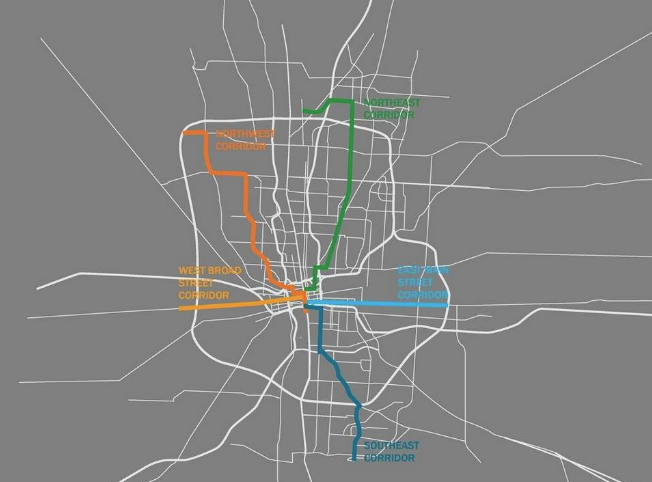New transportation plan hopes to revolutionize transportation in NW Columbus

A newly-announced study hopes to help the city’s Northwest Corridor solve transportation issues that come along with Central Ohio’s rapidly-expanding population.
The Northwest Corridor Mobility Study will be the first of several plans of its kind. The goal of these plans is to identify and carry out the best strategies to efficiently and safely connect residents to employment, education, affordable housing, and healthcare, per a release from the City of Columbus.
Central Ohio is expected to gain up to 1 million additional residents by 2050. In order to accommodate this growth, transportation planning will rely less on cars and include strategies for high capacity transit, enhanced bicycle and pedestrian connectivity, and new technology.
“To remain America’s Opportunity City, Columbus must innovate mobility options for residents that improve access to jobs, education, and healthcare,” said Mayor Andrew J. Ginther in a statement. “We must meet transportation challenges and promote a major shift in how we move people faster and more efficiently as the region prepares for tremendous population growth. The Northwest Corridor Mobility Study creates an action plan to help tackle equity issues and the growing housing affordability needs of our residents in preparation for this growth.”
BROUGHT TO YOU BY
City Council will consider legislation to authorize a professional services contract with Kimley-Horn and Associates for the Mobility Study – Northwest Corridor project and to enter into agreements with partners including the Mid-Ohio Regional Planning Commission, Central Ohio Transit Authority, and The Ohio State University.
“The question is no longer will Columbus grow. It’s how we’re going to grow. We know that focusing jobs and housing near affordable transportation choices is a recipe for success,” said Council President Shannon G. Hardin in a statement. “The Northwest Corridor will take innovative solutions. But this vision to connect jobs, housing, and transportation isn’t confined to one route. I look forward to engaging with partners and the community to analyze and identify future corridors.”
Several factors were weighed in launching the 18-month corridor concept initiative with the Northwest Corridor Mobility Study, which covers an area from Bethel Road to the north and West Broad Street to the south and will focus on Olentangy River Road, the surrounding transportation network, and development opportunities in the area.
The Northwest Corridor presents high potential job growth; links to major institutions and employers such as OSU and OhioHealth; and presents some of the most complex challenges for mobility design and engineering such as physical barriers and “traffic knots” resulting from factors such as the arrangement of freeway interchanges and underpasses.
By tackling the challenges presented in the Northwest Corridor first, planners hope to create a model for other upcoming Insight2050 corridor efforts.
BROUGHT TO YOU BY




